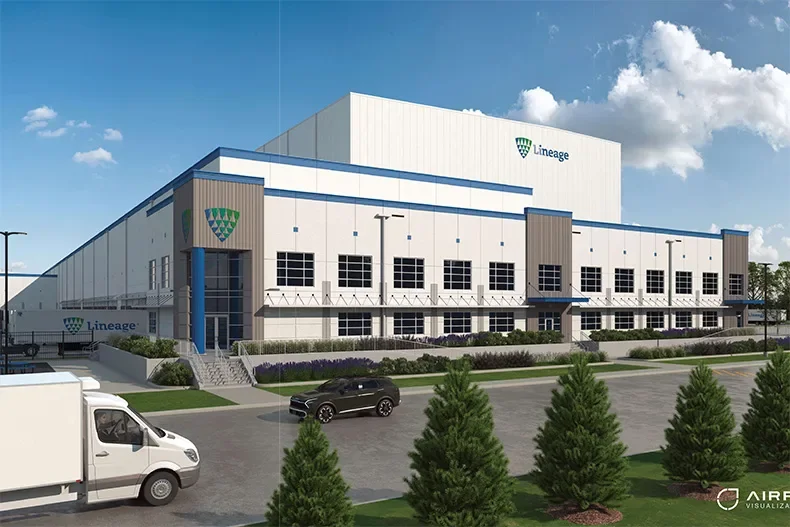The Olathe City Council has granted tax incentives to Lineage Inc. for the construction of a new automated cold storage warehouse, a project projected to exceed $300 million in investment and add hundreds of jobs to the region.
The state-of-the-art facility will rise near 175th Street and Lone Elm Road, covering roughly 219,000 SF on a 146-acre site. Once operational, the project is expected to generate around 200 long-term positions, with an average starting salary of about $60,000. The site selection aligns with Olathe’s employment corridor goals, reinforcing the city’s strategy to attract industrial and logistics-focused growth.
City officials approved a $23 million package of tax incentives for the project, which may include a combination of industrial revenue bonds and property tax abatements. The incentives are contingent upon performance benchmarks tied to job creation, investment thresholds, and operational safety standards.
The council’s approval followed months of review and a close 5-2 vote after the city’s Planning Commission initially recommended denial. Olathe staff cited the project’s alignment with future land-use plans and the city’s ability to support the infrastructure needs of a large-scale industrial operation.
The fully automated facility will serve as a regional logistics hub, supporting food producers, distributors, and retailers throughout the Midwest. Construction is expected to begin in 2026 with completion anticipated by 2027.
City leaders have positioned the Lineage development as a significant step toward expanding Olathe’s role in national supply chain operations. They emphasized that the project will contribute to long-term economic stability, create skilled employment opportunities, and enhance the city’s standing as a center for advanced logistics and cold storage innovation.
Header image: A rendering of the proposed 219,000 SF automated cold storage facility coming to Olathe, Kan. Photo | The City of Olathe






